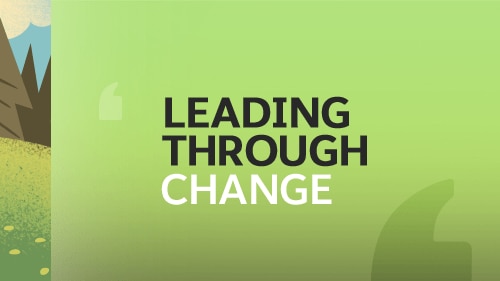We converted Salesforce World Tour Sydney from an in-person event into a fully virtual online event in just 10 days. This annual conference is Salesforce’s largest in the Asia Pacific region, attracting around 10,000 onsite attendees and taking more than six months to organize. Our reimagined event attracted almost 13,000 registered attendees and 80,000 Salesforce Live views. Here’s what we learned about how to broadcast an in-person event online.
1. Know the facts and assemble your team
Despite the hurdles we faced on the path to this monumental shift, we realized there was an opportunity to do something special. Live streaming and conferencing tools are more available than ever before, and online events are far more affordable to produce. There’s also no indication online gatherings are a passing trend: Cisco predicts by 2022, 82% of all internet traffic will be video.
Derek Laney, Salesforce’s head of solutions and product marketing, Asia Pacific, said his team has been talking about doing online events for years. He was excited to replan the conference, despite the challenge ahead.
“There was no precedent to what we were doing,” he said. “So there was no reason for us not to try something new.”
Let’s start with four things to keep in mind as you plan to broadcast your live event online:
- Get leadership buy-in with visuals.
- Develop new teams as needed.
- Scrum often.
- Ruthlessly prioritize and reprioritize every day.
The Asia Pacific (APAC) marketing team oversaw the creation of a series of work streams for World Tour Sydney. Each one focused on a different aspect of the event: content, engagement, and communications. Other subgroups covered online streaming, live demos, customer management, and more.
Regular scrums ensured everyone knew what deliverables were most pressing. There were meetings with headquarters in the U.S. every morning and with the local APAC team in the afternoon. “With the time difference, we had people working almost round the clock,” said Renata Bertram, vice president, Australia and New Zealand (ANZ) marketing.
Bertam added getting buy-in from the very top right from the start was an important part of their success. “We learned early on the importance of creating visuals to help people understand what the event was going to look like and what our production values would be,” she said. “For example, we built slides that replicated looking at a presentation through a screen.”
Ruthless prioritization was key. “I stopped answering everyone’s questions so we could focus on prioritization,” recounts Laney. “We didn’t want to be overwhelmed with the amount of challenges that we had to solve.”
2. Create a shortlist for session content
Our World Tour Sydney team procured a broadcast location and then set to work on content programming. A war-room team was assigned within the first few hours.
On day one, we determined which of the event’s 150 sessions would translate best to a virtual format. We came up with a plan for the top 30 sessions and all the people needed to deliver them. Laney recommends working with the wider team on a need-to-know basis to stay on target and move fast.
“It’s okay if there’s ambiguity around what the process is,” he said. “Not to say that we kept anything confidential, but we needed to focus. Opening up ideas to a larger group can create distraction.”
To avoid clashing interests, event leaders should determine the right time for open collaboration and the right time to be directive.
3. Keep your online audience engaged
Next, we unwrapped all the elements that were in place for the physical event. Piece by piece, we determined how to change direction with the resources on hand. A key part of this was outsourcing. Many of our suppliers were able to pivot to create an engaging online experience. Our audio/visual production partner, for example, had extensive television experience. That meant it could quickly create a compelling multichannel digital experience.
We also considered what we could repurpose. Digital content developed to project onto the back wall of an exhibition hall was used as engaging backdrops for online sessions. The builders for the exhibition stands shifted their work to constructing studios where the content team could film sessions.
Bertram said there should be an engagement experience work group focused on keeping the interest of people who were going to spend a day attending sessions and meeting people at a physical event.
“Streaming content is relatively easy, but how do you build in two-way interaction?” asked Stuart Frank, director of strategic events, Asia Pacific.
The initial live event was meant to include an expo hall, so our team built a digital experience inspired by the act of browsing booths. Attendees from around the world could explore 18 virtual rooms based on Salesforce Customer 360. A company expert hosted each room, sharing demos with visitors and answering questions in real time. In this video, the experience let visitors engage with content in a way that was more active than watching a video and less formal than a scheduled meeting.
Alena Fereday, an Experience Cloud lead solution engineer with Salesforce who helped create the digital experience, provides this tip: “For people wanting to try something similar, we suggest building a working experience quickly so you have time to refine it. It made all the difference.”
Social media can also share highlights and preserve an element of two-way, live interaction. Although we didn’t get to it for the Sydney event, our social team is working to add interactive activities such as contests, Q&As, polls, and other fun moments into the mix.
4. Prep the team for Live AV
Being on camera on a set is very different from being in front of a live audience. Speakers used to a live environment are now in a feedback vacuum, so they must project confidence to engage the audience. Show speakers what the set and overall experience will look like for viewers.
Encourage presenters to rehearse in front of a camera as early as possible. Then give them the opportunity to see what they look like while presenting. They can empathize with the viewer’s experience and change their delivery.
A few other things we learned:
- Shorten the duration of sessions, because attention spans are shorter online.
- Try a conversational format with multiple people talking to each other. A variety of speakers makes for more engaging discussion.
- The camera only sees a one-by-one meter square, so the detail of what’s in that area is really important. Think about what’s going to make it into that space and how it will appear to viewers.
- Ensure that content is accessible for visually-challenged and hearing-impaired attendees. If you plan for a global audience, consider translation services for captioning.
5. Keep internal and external stakeholders briefed
We decided to communicate directly with sponsors, partners, and customers about our pivot. “There’s nothing worse than hearing secondhand news that will materially impact your business,” Frank said.
For the most part, many stakeholders are in the same situation and will understand your decision. Since they have a stake in your event’s success, collaborate with them on shifting content programming if needed.
Finally, when you pivot events, consider your sales team. The in-person event was a significant opportunity for them to gain new leads, connect with existing accounts, and win new deals. But now what? It’s important to keep them in the loop so they can plan accordingly.
You can hold briefings and post updates on internal channels. Build slides and renderings that replicate what you’d see on screen so the sales team knows what the event will look like. Record a quick one-minute explainer video to give employees a chance to sample the experience. And demonstrate the production quality so sales can relay progress to their clients.
Executing a strong game plan allows you to shift your in-person event strategy online. And think of it this way: You’ve now rewritten your company’s event playbook and replaced it with a modern, forward-looking one your customers can adapt to. “What we did was born out of necessity, but what has come out has the potential to change the game in what we do,” said Betram. “There is an appetite out there to engage this way.”
Our Leading Through Change series provides thought leadership, tips, and resources to help business leaders manage through crisis. Check out some of our most recent articles:
- Here are five ways we’re helping our employees navigate work.
- Learn to maintain customer relationships when you can’t meet in person.
- Create a crisis communications plan – just in case.




























